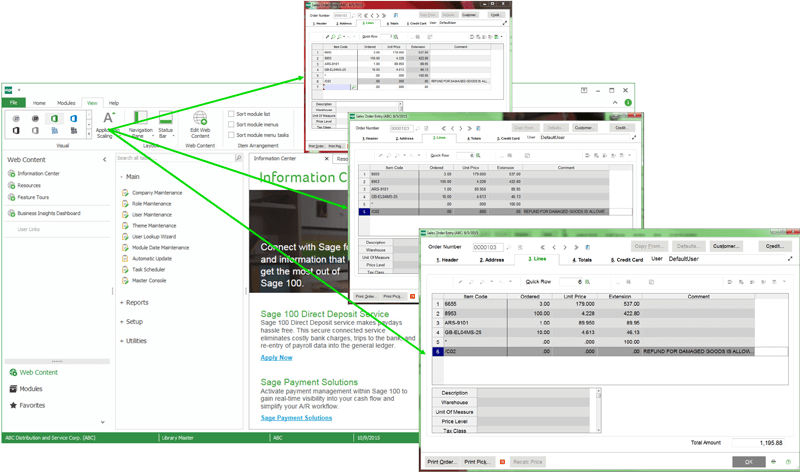By now, you’ve certainly heard about Sage 100c. It’s a modernized version of the classic Sage 100 software (formerly MAS 90 / MAS 200) that customers have been using for decades. With so many customers that have already migrated and many more considering it, we wanted to take a moment to discuss the migration process which is actually quite simple.
Sage 100c Migration At a Glance
At a high level, here’s what the migration process looks like from Sage 100 Standard (MAS 90/MAS 200) to Sage 100c:
- Change Your License – you’ll need to change your current Sage 100 perpetual license (classic) to a Sage 100c subscription
- Check Your Version – your current Sage 100 Classic installation needs to be version 2016 or higher. If you’re running an older version, perform an upgrade before applying your new Sage 100c license keys.
- Apply Your New License Keys – the new license keys provided by Sage (in Step 1) will unlock all the new features and modernized interface.
Within hours of installing the new license keys, you’ll be up and running. It’s as simple as that.
What Do You Get?
Sage 100c delivers added functionality that you don’t get with the classic version. Here are some of the most important features you’ll unlock with your new Sage 100c license:
- Modernization – modernized interface and desktop that’s easier to use and highly customizable.
- Advanced Inventory – more advanced features for inventory like Sage Inventory Advisor Basics and Multi-bin management.
- Manufacturing – a full-featured advanced job management suite for manufacturers.
- Process Automation – streamline core accounting functions with features for AP Automation and electronic invoice (eInvoicing).
Perhaps the most important thing to note is that going forward, Sage 100c will likely receive most of the attention and development effort from Sage in terms of adding new features, connecting with external applications, and continued modernization of the technology and interface.
Should You Migrate?
It’s a question that has a different answer for each company and situation. In a nutshell if you’re happy with your current Sage 100 Classic software, there’s no need to change and you’ll continue to receive Sage 100 support for a long time. But if you want access to more advanced features for reporting, inventory management, manufacturing, process automation, and an overall modern interface, a migration to Sage 100c might be worth considering.







